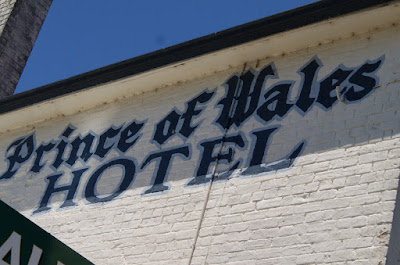The Hamilton Council Chambers consist of a couple of buildings, one which was constructed in the period 1833 to 1835 and the main, central building around 1879. The earlier building is the old police building and is on the right hand side of the main council chamber.


Following many letters and petitions about the increasing number of robberies in the district, Lieutenant Governor Arthur approved the appointment of a police magistrate and supporting constables in 1833. In 1835, Colonial Architect John Lee Archer arrived to inspect the new police office and to which he arranged the addition of two more rooms. There was also a spacious loft for the storage of stolen property. By 1837, the police magistrate, Mr Torlese had a formidable staff consisting of a clerk, district constable, two divisional constables, eleven petty constables and a flagellator. To accommodate the police establishment's customers, there was also a watch house with two large lock ups, eight individual cells plus the lock up keepers quarters and a cook house. It went on to develop into the Hamilton Gaol.


The municipality of Hamilton was one of the first in Tasmania, being proclaimed in 1863. At the first election, J.F Sharland was elected as warden with Captain William Langdon as treasurer. Council's first meeting was in the middle building which was also to be used as the local court in 1879. It is a far more sophisticated building than the older buildings, the old police building and the old gaolers cottage, that surround it.
The new chamber were not only used as the court or council chambers. they could also be hired by the public for functions and meetings. Hiring fees for the new chamber ranged from 10 shillings for "charitable or religeous objects" to three pounds for a ball. A further addition to the complex is a concrete block wing which is probably quite functional but shows no empathy with the look of the rest of the group.
Hamilton today is the administrative centre of the Central Highlands municipality which covers over 12% of Tasmania's land mass. It has a permanent population of 2,216 and 3,700 ratepayers, many of whom own shacks in the communities around the region’s numerous spectacular lakes and mountains.
The Central Highlands boasts glorious scenery and dramatic built heritage dating back to the early 19th century. It is the birthplace of Tasmania’s Hydro-Electric power system and home to the best trout fishing in the southern hemisphere. The region is host to a World Heritage Area, two national parks and other Wilderness Conservation Areas, to Tasmania’s recreational fly fishing, hunting and bushwalking communities, and has strong agricultural, horticultural and tourism industries.
Main Text & Information Sources -
"From Black Snake To Bronte" - Audrey Holiday & John Trigg






















































